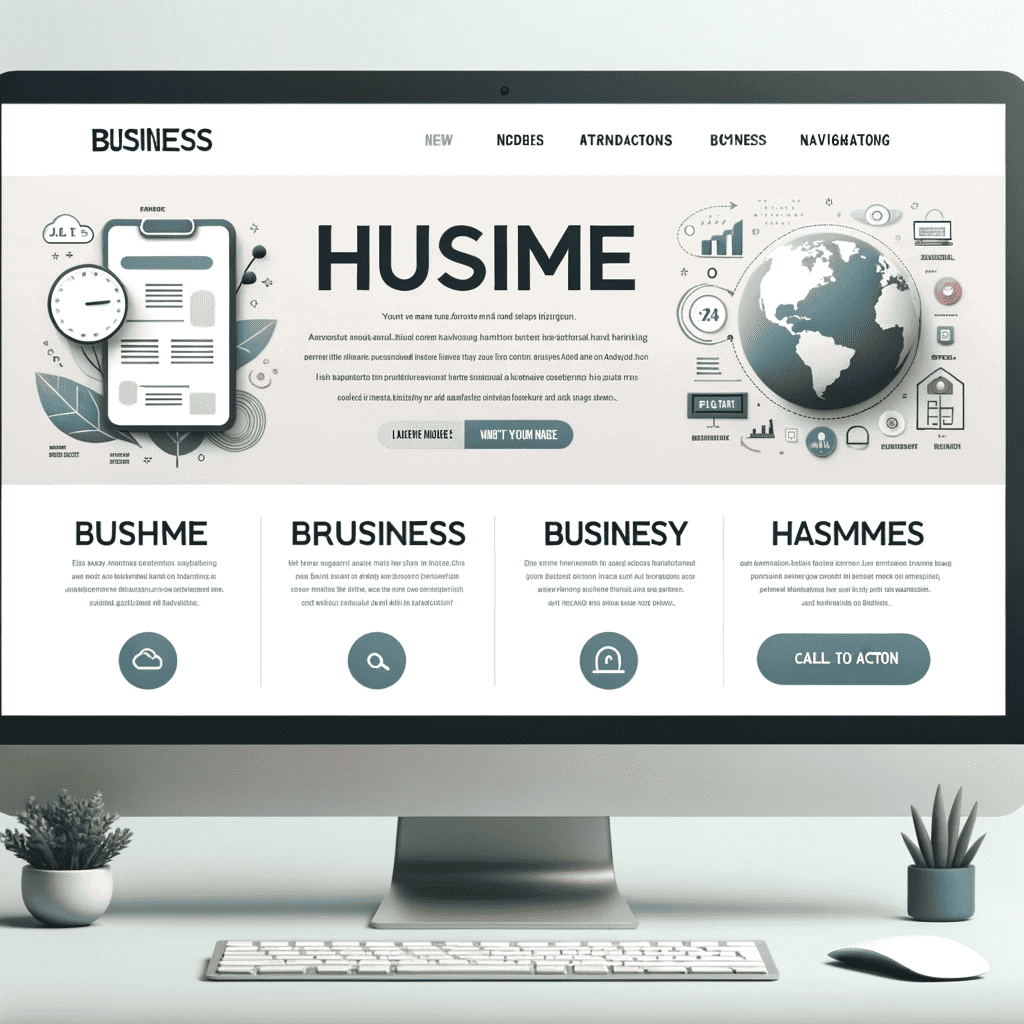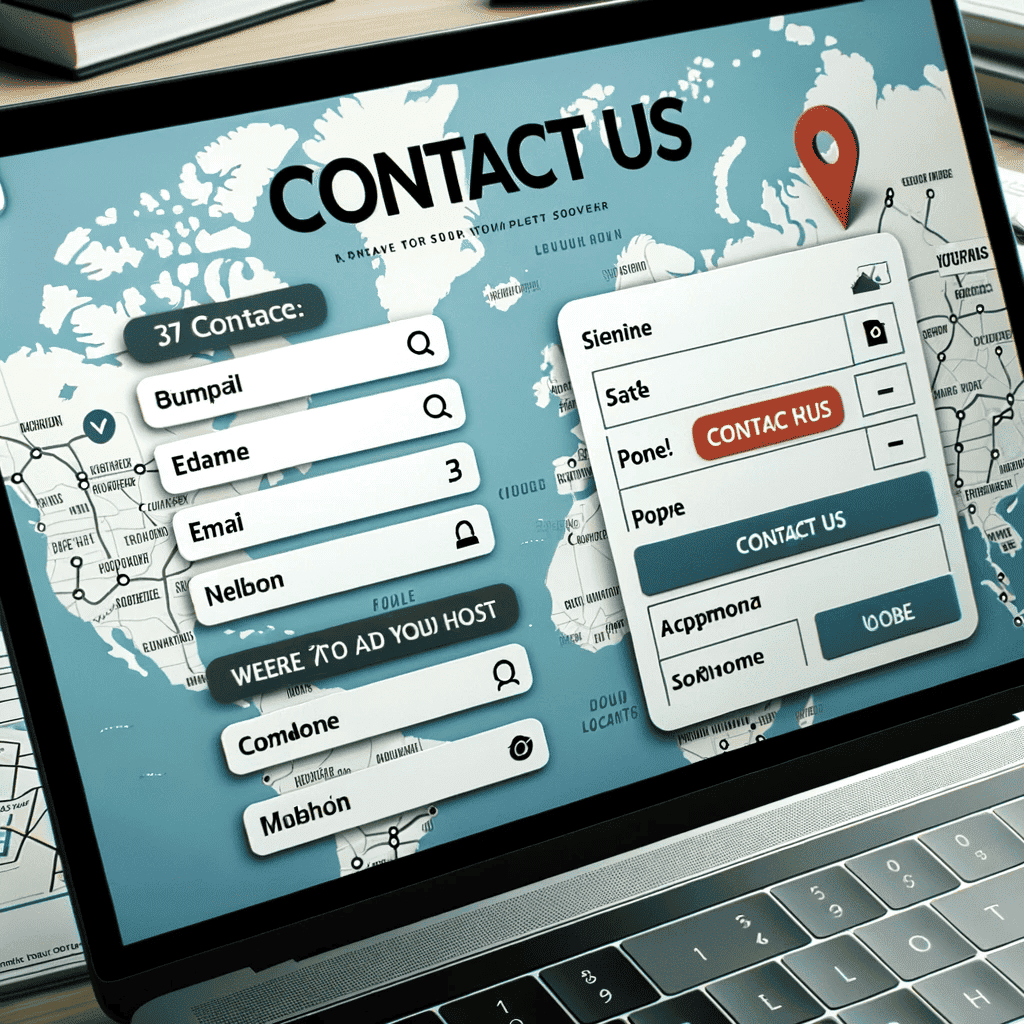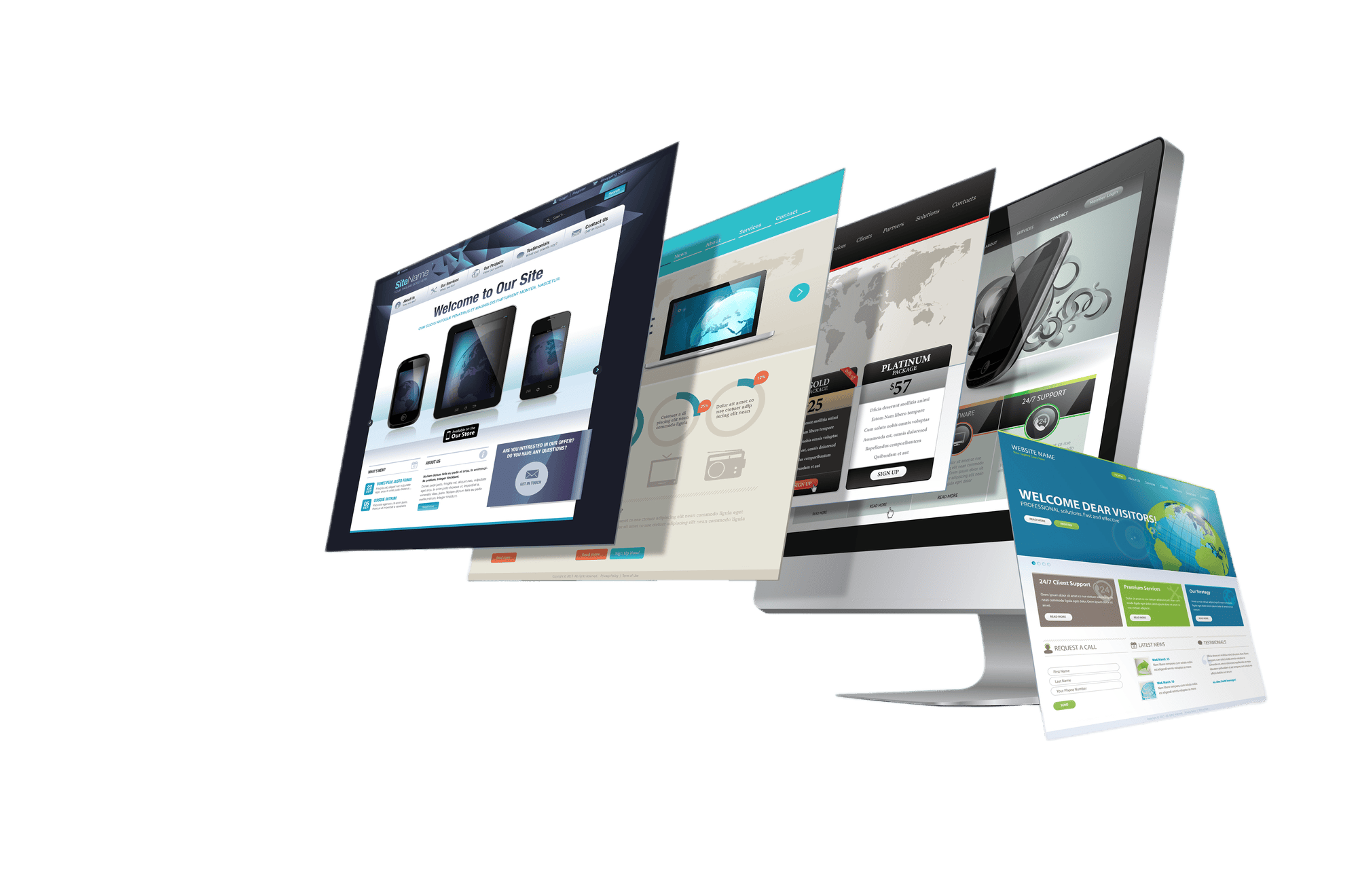7 Pages That Every Business Website Needs
In the digital era, a business website without essential pages is akin to a bestseller with missing chapters. This article delves into the seven indispensable pages every business website needs.
From an engaging home page to a comprehensive privacy policy, we’ll address their importance and how they enhance user experience, boost SEO, and contribute to overall business success.
Let’s embark on this journey to create an effective, informative, and captivating website.

The Essential Home Page
Diving into the essential elements of a business website, we begin with the home page, a critical component that serves as the digital storefront for your company. The home page is often the first impression potential customers have of your business online, and it carries the weighty responsibility of captivating and retaining visitor attention.
The home page should communicate your brand’s unique value proposition succinctly and clearly. It should highlight your products/services, demonstrate your expertise, and reflect your company’s culture. A well-designed home page can build trust, facilitate user navigation, and guide visitors towards desired actions such as making a purchase or requesting a quote.
A compelling home page often incorporates key elements such as a clear and concise headline, a brief description of the business, a call-to-action (CTA), and intuitive navigation menus. The headline and business description should articulate what your business does, and who it serves, while the CTA should encourage visitors to take the next step, whether that’s scheduling a consultation, signing up for a newsletter, or making a purchase.
Furthermore, intuitive navigation menus on your home page can guide visitors to other significant pages on your site like products/services, about us, contact us, or blog. This ease of navigation can enhance the user experience, reduce bounce rates, and increase the likelihood of conversion.
In essence, the home page is a pivotal part of your business website that can set the tone for customer interactions, conversions, and ultimately, business growth.

About Us: Telling Your Business Story
Why, in this digital era, is it essential to narrate your business story on the ‘About Us’ page, and how does this page contribute to shaping your brand’s identity and credibility?
The ‘About Us’ page serves as a platform to share your business’s journey, its values, mission, and vision. This transparency builds a perception of trustworthiness and authenticity, thus shaping your brand’s identity and credibility.
In the sea of businesses online, your unique story is what sets you apart. It helps you connect with your audience on a more personal level, humanizing your brand and fostering a sense of trust and loyalty.
To effectively narrate your business story, consider the following:
– **Start with the beginning**: Share how your business came into existence. This helps in creating a connection with the audience.
– **Highlight your values and mission**: This demonstrates what drives your business and what you stand for.
– **Share your victories and challenges**: This portrays authenticity, showing that you’re not afraid to share your highs and lows.
– **Showcase your team**: This adds a human element to your brand, making it more relatable.
– **End with your future vision**: This shows your commitment and dedication towards growth.

Services or Products: Showcasing What You Offer
How, then, can we effectively showcase the services or products that your business offers on your website? The answer lies in creating a dedicated page or section specifically for this purpose.
This page should be designed to provide potential customers with a comprehensive understanding of what your business can do for them. It should clearly outline the services or products you provide, their features, benefits, and prices, if applicable. But more than just a list, this page should emphasize how your offerings can address the needs or problems of your target market.
Quality images are a must, particularly for product-based businesses. Good photographs not only add aesthetic appeal to your page, but they can also enhance the perceived value of your products. For service providers, it’s equally important to use relevant images or graphics that can visually represent the services you offer.
Don’t forget to include customer testimonials or case studies, if possible. These can serve as powerful social proof to further convince your site visitors of the value of your offerings.
Remember, the goal of your services or products page is not just to inform, but to persuade. It should be designed in a way that encourages your site visitors to take the next step, whether that’s making a purchase, contacting you for more information, or booking a service.

Testimonials and Reviews: Building Trust
Testimonials and reviews form a vital part of any business website, serving as a visible endorsement of your products or services and instilling a sense of trust in potential customers. They are essentially social proof, showing website visitors that others have already experienced and approved of your offerings.
These endorsements can be incredibly persuasive. They provide real-world examples of the benefits and results your products or services have brought to others. They can help overcome skepticism, reassure hesitant visitors, and build a positive brand image.
Consider including the following elements in your testimonials and reviews section for maximum impact:
* **Authenticity**: Ensure reviews and testimonials are genuine and verifiable. Consider including a photo or link to the reviewer’s social media profile for added authenticity.
* **Diversity**: Showcase a wide range of testimonials from different types of customers. This can help visitors identify with the reviewers and see themselves in their experiences.
* **Specificity**: Encourage customers to provide detailed testimonials, covering specific aspects of their experience. This can add depth and credibility to their endorsements.
* **Positive and Negative**: Don’t shy away from including less-than-perfect reviews. They can lend credibility to your testimonials section and show that you value all feedback.
* **Call to Action**: Include a clear, compelling call to action encouraging visitors to share their own experiences and reviews.

Contact Us: Making Communication Easy
Efficiency in communication and accessibility are essential factors for a successful ‘Contact Us’ page, ensuring seamless interaction between the business and its clients. The ‘Contact Us’ page serves as a bridge, connecting potential customers to a business. It is a virtual doorway that invites clients to initiate a dialogue, ask questions, raise concerns, or provide feedback. Therefore, it’s crucial that this page is easy to find, user-friendly, and effective in facilitating communication.
The ‘Contact Us’ page should include multiple methods of contact such as a physical address, phone number, email address, and a contact form for convenience. Some businesses also include their operating hours, links to their social media accounts, and a map indicating their location. Providing this range of contact methods caters to the varying preferences of customers, thereby increasing the likelihood of a successful interaction.
Moreover, the design of the ‘Contact Us’ page should be simple yet inviting. An overcrowded page with too much information can be overwhelming and might deter people from reaching out. At the same time, an overly simplistic page without enough information can appear unprofessional, or even suspicious.
Lastly, response time is a significant part of the ‘Contact Us’ page experience. Clients appreciate prompt responses, which show that the business values their time and input. Timely responses also help to build trust and foster a positive relationship with clients.

Blog: Sharing Expertise and Insights
A blog page, as an essential component of a business website, serves a dual purpose: it allows businesses to share their expertise and insights, and it fosters an engaging relationship with the audience. By regularly publishing informative and relevant content, businesses can establish themselves as thought leaders in their respective fields, enhancing their credibility and trustworthiness in the eyes of their audience.
The blog serves as a platform for businesses to showcase their knowledge, share industry insights, and address customer queries and concerns. It’s a tool for customer engagement, fostering a two-way communication channel that can ultimately lead to better customer relationships and higher conversion rates.
Consider the following when creating a blog page for your business website:
* **Consistent Content:** Aim for regular blog postings to keep your audience engaged and coming back for more.
* **Quality Over Quantity:** Focus on creating high-quality content that adds value to your readers, rather than simply focusing on the number of blog posts.
* **Relevant Topics:** Your blog content should be relevant to your industry and beneficial to your target audience.
* **Engaging Tone:** Use a conversational tone to make your content more relatable and engaging.
* **CTAs (Call to Actions):** Incorporate CTAs in your blog posts to guide your audience towards desired actions, such as signing up for newsletters or purchasing products.

Privacy Policy: Ensuring User Trust and Legal Compliance
Amidst the digital age, and with the surge in online transactions, having a comprehensive Privacy Policy on your business website has become not only a legal necessity but also a crucial element in building user trust and confidence. This document, often overlooked, serves as a declaration of how your business collects, uses, and manages personal data. It offers transparency which, in turn, creates a foundation of trust between your business and its users.
A Privacy Policy is legally required in many jurisdictions, especially if your website collects personal data such as names, email addresses, credit card information, or IP addresses. The requirements for these policies vary, but they generally need to disclose the types of data collected, the purpose for data collection, data storage and security measures, and the rights of the users regarding their data.
Having a clear, easily accessible Privacy Policy can enhance your brand’s reputation and customer loyalty. It shows that your business respects user privacy and is committed to protecting their information. This can alleviate any concerns users might have about sharing their personal data, and make them more likely to engage with your site.
Frequently Asked Questions
How Does a Frequently Asked Questions (Faq) Page Benefit My Website?
A Frequently Asked Questions (FAQ) page significantly enhances user experience.
Statistics reveal that 91% of consumers prefer an online knowledge base to resolve their queries.
An FAQ page serves this purpose, enabling customers to find answers swiftly.
It reduces customer support workload, improves SEO, and establishes your credibility.
What Is the Role of a Site Map in a Business Website and Is It Necessary to Have One?
A site map plays a crucial role in a business website by providing a clear and user-friendly outline of all the site’s content. It enhances navigation, ensuring visitors can easily find the information they need.
Moreover, it is essential for search engine optimization as it helps search engines to understand and index the site’s structure, improving visibility and ranking.
Therefore, it is highly recommended to have a site map for a business website.
How Does a ‘Meet the Team’ Page Contribute to the Overall Credibility and Authenticity of My Business?
A ‘Meet the Team’ page significantly enhances your business’s credibility and authenticity. It adds a personal touch, allowing visitors to see the real people behind your company. This transparency fosters trust, as it shows you’re not hiding behind a corporate veil.
Moreover, showcasing your team’s expertise and qualifications can reassure potential customers that they’re dealing with professionals, thus boosting your business’s legitimacy.
Why Should a Business Website Have a ‘Careers’ Page and What Should It Include?
A ‘careers’ page is integral to a business website as it attracts potential talent, showcasing job opportunities within the company. This page should include current vacancies, descriptions of roles, required qualifications, and a glimpse into company culture.
It may also feature employee testimonials or benefits offered. This provides transparency to prospective employees, enhancing the company’s credibility and attractiveness as a potential employer.
How Does a ‘Press and Media’ Page Help in Promoting My Business?
A ‘Press and Media’ page is instrumental in promoting your business as it serves as a hub for all your company’s news, achievements, and media appearances. This page boosts your credibility and visibility, offering journalists and potential customers a glimpse of your business milestones.
Additionally, it can provide downloadable resources like press kits, enhancing your media relations and making it easier for others to share your business story.
A well-structured business website with these seven essential pages serves as a lighthouse, guiding customers through the high seas of online information. It not only showcases a business’s offerings but also builds trust, encourages communication, shares expertise, and ensures user trust and legal compliance.
Ultimately, these pages are integral in creating a user-friendly website that effectively promotes a business and enhances its SEO. As the adage goes, ‘first impressions count,’ and a well-designed website can help make that first impression a positive one.





